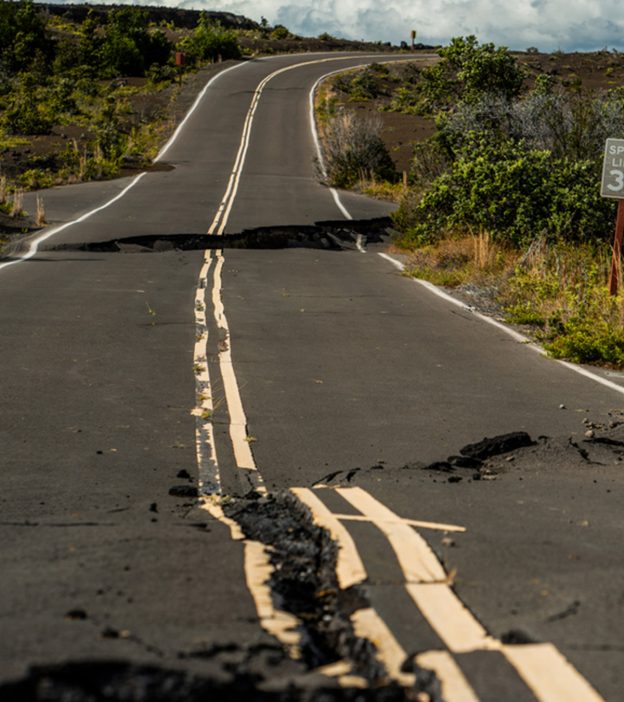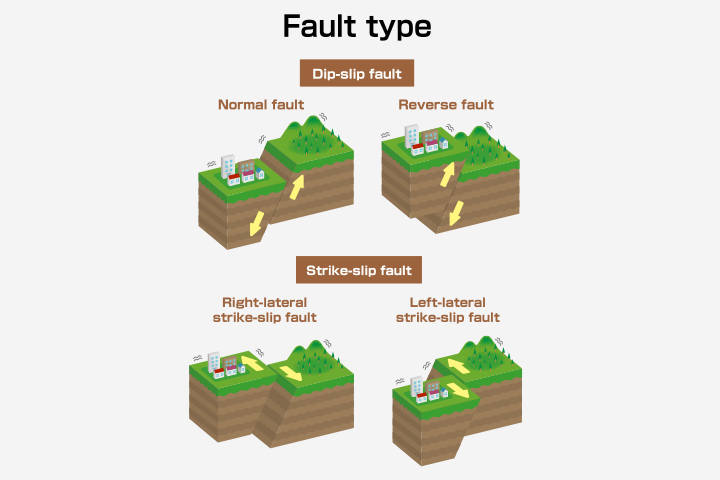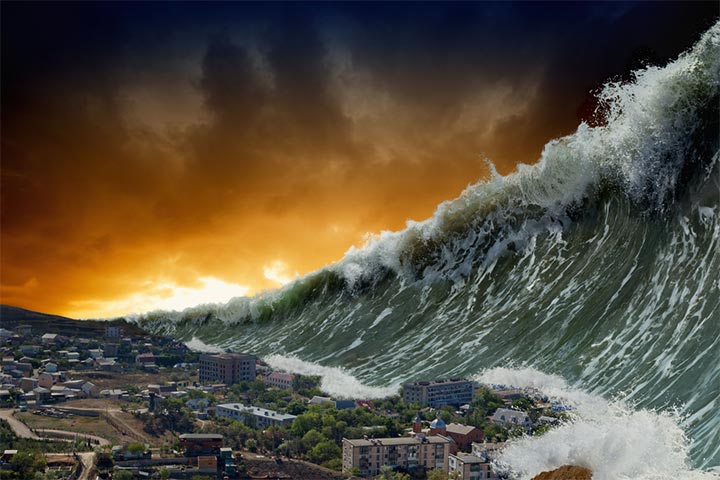
Image: Shutterstock
An earthquake is the sudden shaking (tremors) of the Earth’s lithosphere, the outermost layer consisting of the crust and the upper mantle。It happens when energy shock waves or seismic waves pass through the solid rocks on the Earth’s crust. If you are curious to know more, our post on facts about earthquakes can be of your interest. Earthquakes can be mild that pass without anyone knowing or disastrous, leading to loss of lives, widespread destruction, and displacing or disrupting the ground (1). Keep reading for more details on earthquakes, safety measures to take, and more.
What Are Tectonic Plates And Faults?
Before we delve into how earthquakes are caused, it is important to understand tectonic plates and faults. The Earth’s crust, called the lithosphere, comprises 15 to 20 moving tectonic plates that rest on the hot, molten rock of the Earth’s mantle(2)。热在地球内部的原因plates to move, sometimes toward and sometimes away from each other.
A zone of fracture between two blocks of rock is known as a fault. Fault lines are the cracks in the Earth’s crust where tectonic plates meet. Faults can range from a few millimeters to thousands of kilometers. During an earthquake, the rock on one side of the fault slips suddenly(3)。The major types of faults include dip-slip normal, dip-slip reverse, strike-slip, and oblique-slip.
 Quick fact
Quick factWhat Causes An Earthquake?
The continuous motion of the tectonic plates leads to the steady build-up of stress or pressure along the faults in the Earth’s crust.When the accumulated stress is suddenly released, it results in seismic waves that travel in all directions and cause ground motions or shaking of the Earth’s surface(4)(5)(6)。Let’s learn about the four main types of earthquakes in order to understand the causes of earthquakes better.
- Tectonic earthquakes:This, as explained above, is the most common cause of earthquakes.
- Volcanic earthquakes:These are caused due to volcanic activities, such as the movement ofmagmaiXA thick molten form of rocks present beneath the Earth’s surface., which leads to significant stress changes inthe Earth’s crust. Volcanic earthquakes are not as devastating as tectonic earthquakes(7)(8)。
- Induced earthquakes:These occur due to human activities, such as nuclear explosions, geothermal projects, tunnel constructions, oil extraction, and filling of water reservoirs, which may cause subsidence and adds stress to the faults in the Earth’s crust(9)。Fracking causes 33% of human-induced earthquakes, whereas mining and water reservoir impoundment account for 25% and 11% of these earthquakes, respectively(10)。
- Collapse earthquakes:These are small earthquakes triggered by cave-ins and massive land slidings in the regions of caverns and mines due to the explosion of rocks on the Earth’s surface(11)。
What Are Hypocenter And Epicenter?
The point of origin of an earthquake rupture within the Earth is called the hypocenter, also called the focus.It is the position where the seismic waves in the rocks are first released, marking the origin of the fault.
The point on the Earth’s surface or the ground directly above the hypocenter, where the earthquake originates, is called the epicenter. Locating the epicenter is important in determining the faults that rupture and cause an earthquake. If the fault is recognized, the hazard modeling of that area can be done more effectively(12)。
 Did you know?
Did you know?What Are Aftershocks And Foreshocks?
The smaller earthquakes that follow the main earthquake in an area are called aftershocks. These occur following the first hours, days, weeks, or even months after the major earthquake and can cause further damage to the already weakened structures in towns or cities.
The foreshocks are earthquakes that occur before the main intense earthquake. These are comparatively less severe and might come as a warning sign of a major quake(13)。
How Are Earthquakes Measured?
Image: Shutterstock
Earthquakes are measured using a seismograph, also called a seismometer, which monitors the seismic waves。It works on the principle of a pendulum and integrates a timing device and a recording device.
Initially, the Richter scale (also known as Richter Magnitude Scale) was used to measure the magnitude of an earthquake, but today, the moment magnitude scale (MMS) is used globally(14)。The larger the value of MMS, the more severe the earthquake.
- At a value below 3 on the magnitude scale, one cannot feel an earthquake.
- At a value of 4 or 5 on the scale, your house might shake, and you may feel as though a large truck is passing close by. Some people may not notice this.
- At 6, things fall off, windows break, and houses might crack.
- At 7, buildings and other structures often collapse, and there are many casualties.
- At 8 and above, whole areas near the epicenter can be totally destroyed.
Safety Measures To Take During An Earthquake
Here are some safety measures to follow before, during, and after an earthquake(15)(16)。
1. Before an earthquake
- Have a disaster prevention plan to reduce the damage and injury caused by an earthquake.
- Improve the earthquake resilience of the house.
- Stockpile water and foodstuff.
- Participate in disaster training.
- Prepare a first aid kit.
2. During an earthquake
Image: Shutterstock
- Dropunder something sturdy, such as a table, bed, or desk,coveryour head and neck with your arms, andhold onto your shelter until the shaking stops.
- Stay indoors and away from windows.
- When on the road, move to an open area and away from buildings, powerlines, poles, bridges, and trees.
- Avoid areas of secondary hazards, such as landslides.
- If you are inside a train, grip the railing/ hand strip firmly.
- If you are at the seashore, seek high ground.
- Turn on the radio for instructions and updates.
3. After an earthquake
- Check for injuries and damage, and secureescape routes。
- Prevent fires, shut off gas valves, and unplug electrical cords.
- Watch out for aftershocks.
- Make sure your family is safe, assist neighbors, and fend for yourself.
- Recover things and try to get back to normal.
The technology used to record earthquakes and identify their source has improved over the years; however, the tech to predict earthquakes still eludes humans. According to the US Geological Survey data, there has been an up-and-down trend in the number of earthquakes globally. In 2000, the number of earthquakes recorded across the globe was 1505, which rose to 2481 in 2011 and dropped to 2206 in 2021.
Number of Earthquakes across the world (2000-2021)
Source:Development of the number of earthquakes (M5+) worldwide from 2000 to 2021; Statista/US Geological SurveyWhat Is A Tsunami?
A series of large, destructivesea wavesproduced by an earthquake, landslide, or volcanic eruption on the seafloor are known as tsunamis.When these giant waves approach land and shallow water areas, they build up to higher and higher heights. The speed of a tsunami depends on the depth of the ocean rather than the distance from the source of the wave.
Tsunamis are not to be confused with tidal waves, which result from strong winds and the gravitational pull of the Earth, Moon, and Sun. Most tsunamis are triggered by earthquakes with a magnitude of 6.5 and above(17)(18)(19)。
 Trivia
Trivia30 Fascinating Facts About Earthquakes For Kids
Here are some interesting facts about earthquakes(1)(6)(20)(21)(22)(23)(24)(25)(26)(27)(28)。
- The 1960 Valdivia earthquake in Chile is the most powerful earthquake recorded in the world to date. It measured 9.6 on the Richter scale.
- The 1964 Alaskan earthquake of magnitude 9.2 is the most powerful earthquake ever recorded in the United States.
- Alaska and California are the most earthquake-prone states in the US.
- 日本、印度尼西亚和中国的一些最earthquake-prone countries in the world.
- Most earthquakes occur at depths of less than 50 miles (80 kilometers) below the Earth’s surface.
- Earthquakes can happen as deep as 400 miles (644 kilometers) belowthe Earth’ssurface.
- The Himalayas and the Andes were created due to the movement of the tectonic plates.
- Earthquakes can happen in any weather condition.
- GeologistsiXResearchers involved in the study of the history and composition of the Earth.cannot predict earthquakes, but they can determine the faults and warn you of a possible earthquake at a place in the future.
- The first pendulum seismoscope to measure the shaking of the ground during an earthquake was developed in 1751.
- That the faults were the source of earthquakes was recognized in 1885.
- Millions of earthquakes take place every year, but most go unnoticed.
- Approximately 80% of the world’s largest earthquakes occur in the Pacific Ocean, near Japan, at a place called the ’Ring of Fire.’
- In ancient Greece, people believed that earthquakes happen whenthe seagod Poseidon gets angry. So, they nicknamed him the ‘Earth-Shaker.’
- Aristotle recognized as early as 350 BC that soft ground shakes more than hard rock during an earthquake.
- The deadliest earthquake recorded in human history is the 1556 earthquake in Shansi, China. It was estimated to have killed 830,000 people.
- The earliest recorded earthquake has been traced back to 1831 BC in the Shandong province of China.
- The Indian Ocean earthquake and tsunami in 2004 generated enough energy to power all the homes and businesses in the US for three days.
- An average earthquake lasts for around one minute.
- According to Japanese mythology, a giant catfish named Namazu is responsible for earthquakes.
- Earthquakes kill approximately 8,000 people each year.
- Parkfield, California, is known as “The Earthquake Capital of the World” and has a bridge that spans two tectonic plates.
- An earthquake is capable of releasing 100 times more powerful energy than the energy released by the atomic bomb dropped on Hiroshima in Japan in 1945.
- The 1811 New Madrid earthquake is known to have caused certain parts of the Mississippi River to flow backward.
- Canals and ponds may release strange smells before an earthquake.
- The 2004 Sumatra-Andaman earthquake in the Indian Ocean lasted for about 10 minutes, which is the longest ever recorded.
- The NorthernHemisphereiXEqual halves of a sphere, a term used to describe the divisions of the Earth’s.records more earthquakes than the Southern Hemisphere.
- The world’s worst landslide triggered by an earthquake occurred in the Kansu Province of China in 1920. It killed about 200,000 people.
- Have you heard of the “Miracle Babies?” After the 1985 Mexico earthquake, almost all newborns in a collapsed hospital were rescued after seven days without food, water, or human company.
Frequently Asked Questions
1. Which country has the most earthquakes?
Japan is the country with the most earthquakes. According to geological experts,“The whole country is in a very active seismic area, and they have the densest seismic network in the world, so they are able to record many earthquakes”(22).
2. What is the fastest earthquake wave?
Earthquakes release energy waves called seismic waves. Based on the direction of propagation, they are of two types – Compressional (P) wave and Shear (S) wave. P waves are the fastest waves that arrive the first after an earthquake (29).
Earthquake is a natural phenomenon. Earthquakes can be mild that pass unnoticed, or intense, which can wreak havoc and inflict acolossal lossiXA huge loss that impacts one’s life to a large extent.。This post is for children who are curious to know facts about earthquakes. It also talks about tectonic plates, faults, and the causes of earthquakes. Different types of earthquakes such as tectonic earthquakes, volcanic earthquakes, induced earthquakes, and collapse earthquakes are also covered in this post. So read these facts to your child and satiate their curious mind.
Infographic: Highest Magnitude Earthquakes
Earthquakes vary in magnitude and intensity. The Richter scale measures the magnitude of an earthquake, while the Mercalli scale determines its intensity. This infographic sheds light on the most strong earthquakes measured on the Richter scale from 0 to 10. Save and share this with your child to help pique their curiosity about the topic.

Illustration: Momjunction Design Team
Get high-quality PDF version by clicking below.
Download Infographic
Key Pointers
- Depending upon what causes it, earthquakes are of four different types.
- Continuous tectonic plates movement is the most common cause of earthquakes.
- From earthquake-prone countries to Miracle babies, check out more interesting facts about earthquakes for kids as you scroll through.
References:
2.What is Tectonic Shift?; National Oceanic and Atmospheric Administration
3.What is a fault and what are the different types?; U.S. Department of the Interior
4.What causes an earthquake?; Australian Academy of Science
5.Causes of Earthquakes in General; Swiss Seismological Service
6.What is an earthquake and what causes them to happen?; U.S. Department of the Interior
7.How are volcanoes and earthquakes related?; Oregon State University
8.Monitoring Volcano Seismicity Provides Insight to Volcanic Structure; U.S. Department of the Interior
9.Human-Induced Earthquakes; Bureau of Economic Geology, University of Texas, Austin
10.The Human-Induced Earthquake Database (HiQuake); inducedearthquakes.org
11.Earthquake; United Nations Office for Outer Space Affairs
12.Earthquake Glossary; The University of Utah
13.Seismology Glossary; National Center for Seismology, Ministry of Earth Sciences, Government of India
14.How Are Earthquake Magnitudes Measured?; Michigan Technological University
15.Earthquake Preparedness and Response – Preparedness; United States Department of Labor
16.Stay Safe During an Earthquake; CDC
17.What is a tsunami?; National Oceanic and Atmospheric Administration
18.Tsunami; Geoscience Australia
19.What is it about an earthquake that causes a tsunami?; U.S. Department of the Interior
20.Cool Earthquake Facts; U.S. Department of the Interior
21.Earthquake Facts & Earthquake Fantasy; U.S. Department of the Interior
22.Which country has the most earthquakes?; U.S. Department of the Interior
23.Is there earthquake weather?; U.S. Department of the Interior
24. Shannon Doocy, et al.;The Human Impact of Earthquakes: a Historical Review of Events 1980-2009 and Systematic Literature Review; PloS Currents (2013).
25.Where do earthquakes occur?; U.S. Department of the Interior
26.How angry was the ancient Greek god Poseidon in 141/142 A.D.?; Smithsonian Astrophysical Observatory
27.Analysis of the Sumatra-Andaman Earthquake Reveals Longest Fault Rupture Ever; National Science Foundation
28.When the Mississippi Flowed Backwards; University of California
29.Body waves inside the earth; U.S. Department of the Interior
30.Designing for resistance to disaster: IAEA.org





















